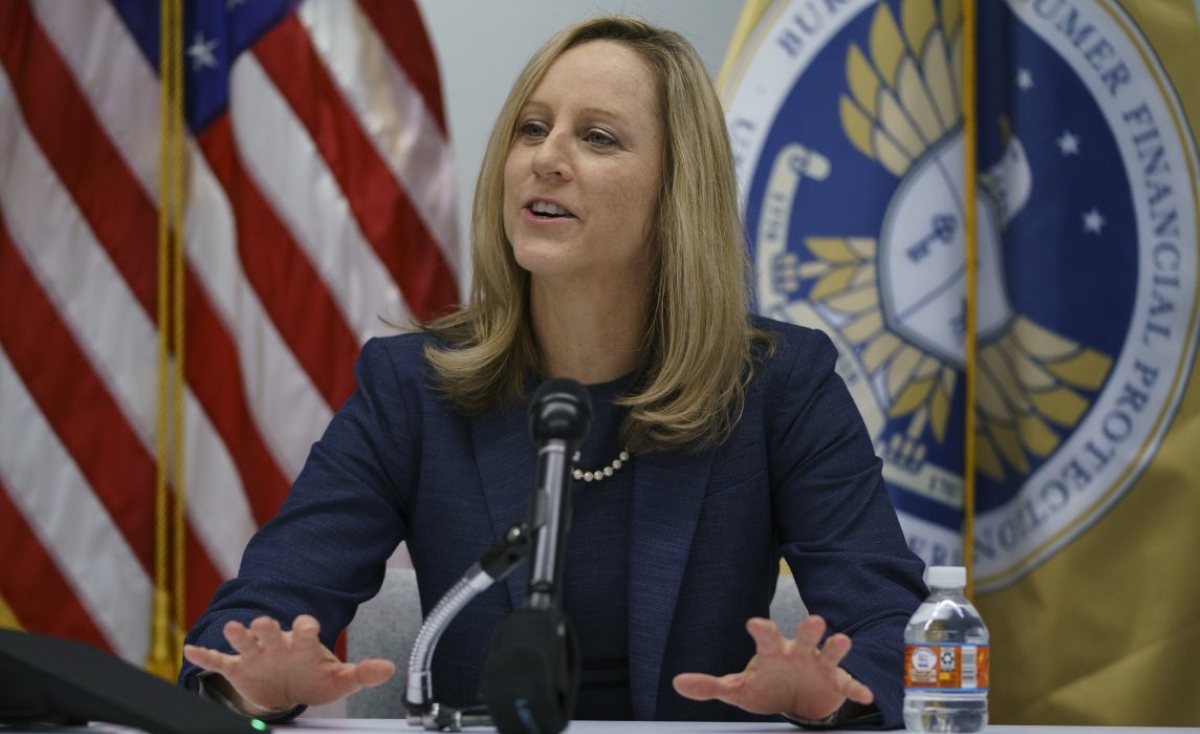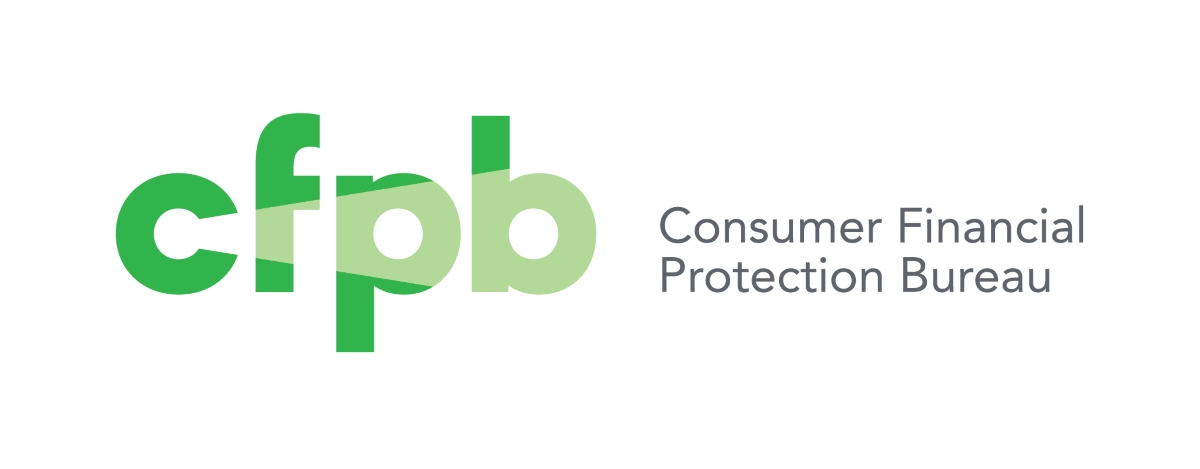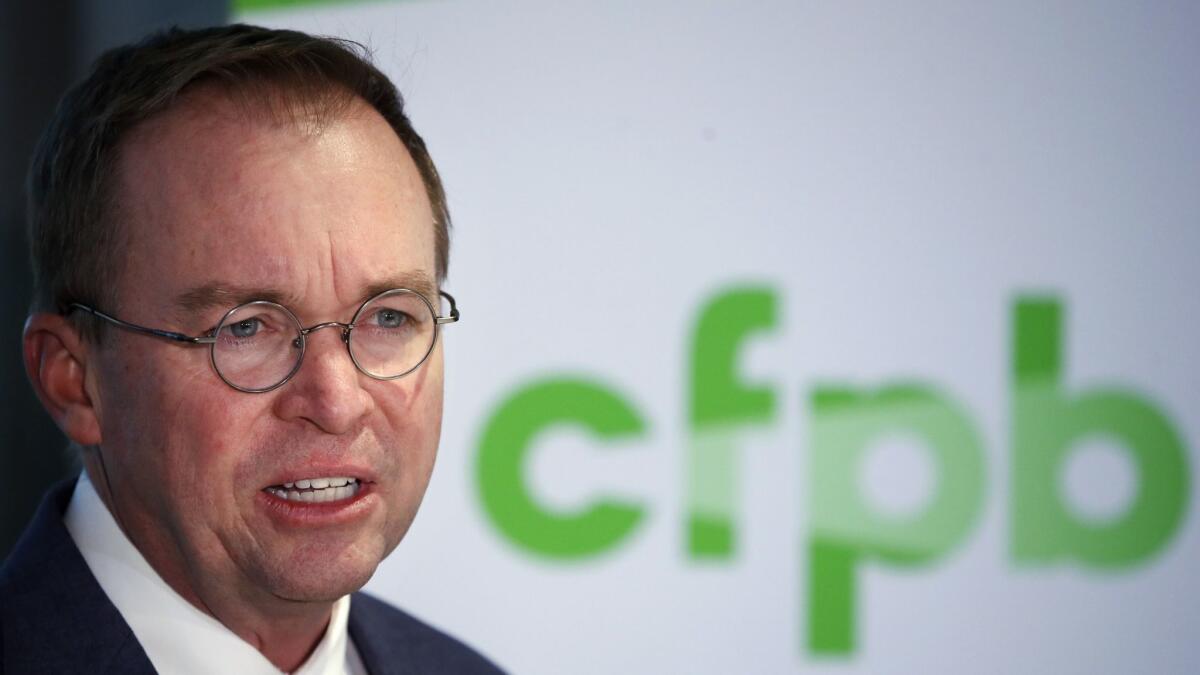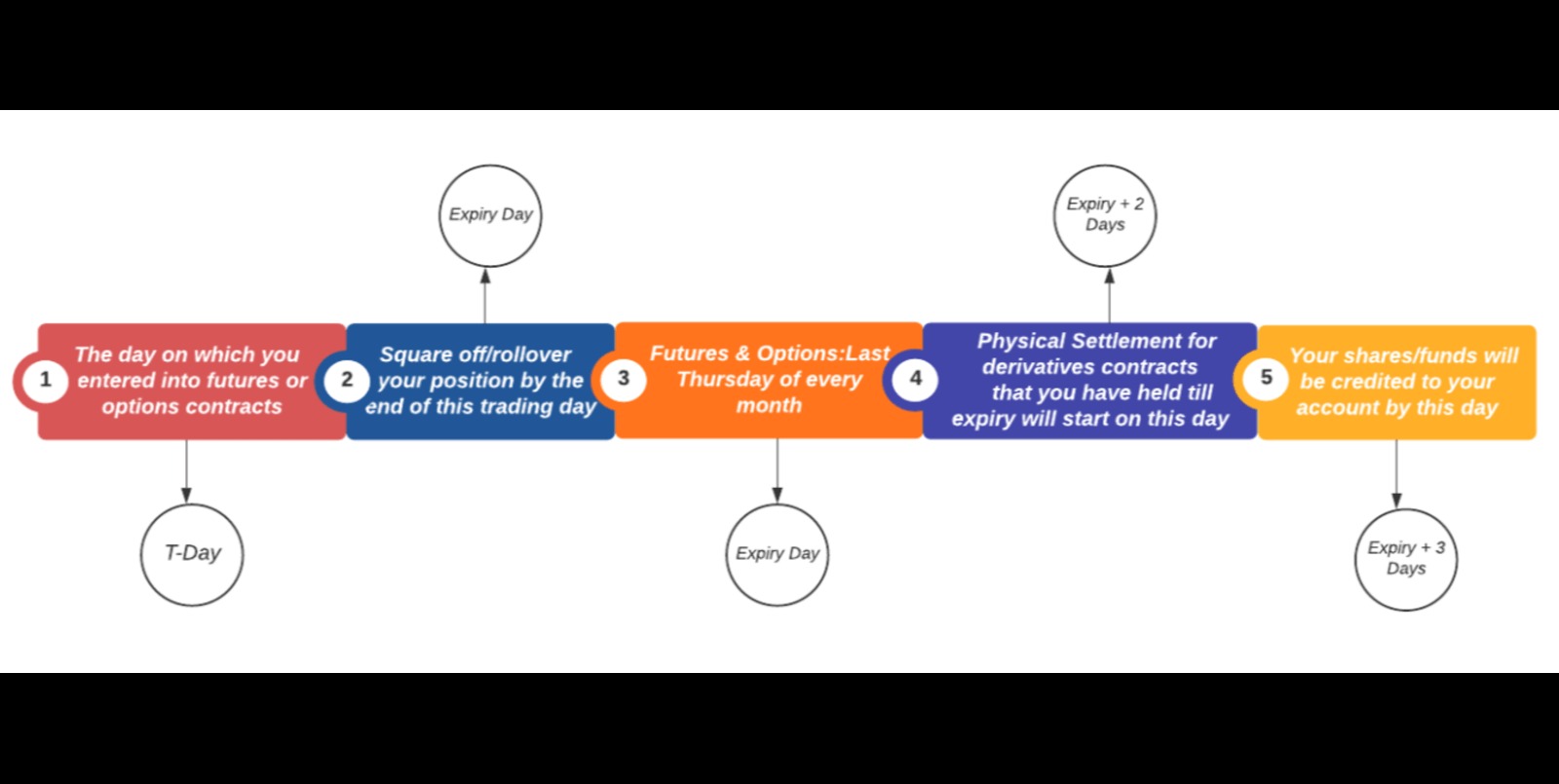Home>Finance>What Is The Role Of The Consumer Financial Protection Bureau In Residential Lending?


Finance
What Is The Role Of The Consumer Financial Protection Bureau In Residential Lending?
Modified: March 1, 2024
Discover the vital role of the Consumer Financial Protection Bureau in residential lending and how it impacts the world of finance.
(Many of the links in this article redirect to a specific reviewed product. Your purchase of these products through affiliate links helps to generate commission for LiveWell, at no extra cost. Learn more)
Table of Contents
- Introduction
- Background of the Consumer Financial Protection Bureau
- Scope and Authority of the Consumer Financial Protection Bureau
- Regulation and Enforcement of Residential Lending
- Consumer Complaints and Dispute Resolution
- Consumer Education and Outreach Initiatives
- Monitoring and Supervision of Financial Institutions
- Collaborations with Other Regulatory Agencies
- Future Challenges and Potential Changes to the Consumer Financial Protection Bureau’s Role
- Conclusion
Introduction
The role of the Consumer Financial Protection Bureau (CFPB) in residential lending is of significant importance in ensuring fair and transparent practices in the consumer finance industry. The CFPB is a regulatory agency established under the Dodd-Frank Wall Street Reform and Consumer Protection Act in response to the 2008 financial crisis. Its primary objective is to protect consumers and promote fairness in financial transactions, including residential lending.
The CFPB is responsible for enforcing various federal laws that govern residential lending, such as the Truth in Lending Act (TILA) and the Real Estate Settlement Procedures Act (RESPA). These laws aim to safeguard consumers’ rights by requiring lenders and financial institutions to disclose accurate and transparent information about loan terms, fees, and other costs associated with mortgages and home loans.
Additionally, the CFPB works to prevent unfair, deceptive, or abusive practices in the residential lending industry. It sets rules and regulations that financial institutions must follow to ensure that consumers are treated fairly during the loan origination, underwriting, and servicing processes.
Furthermore, the CFPB actively monitors the marketplace to identify and address emerging consumer risks and trends in residential lending. Through its supervision and examination programs, it conducts regular assessments of financial institutions to ensure compliance with consumer protection laws and regulations.
This article will explore the various aspects of the CFPB’s role in residential lending, including its scope and authority, regulation and enforcement activities, consumer complaint resolution, education and outreach initiatives, monitoring and supervision of financial institutions, and collaborations with other regulatory agencies. It will also discuss the future challenges and potential changes the CFPB may face in fulfilling its mission of protecting consumers in the residential lending sector.
Background of the Consumer Financial Protection Bureau
The Consumer Financial Protection Bureau (CFPB) was established in 2011 as an independent regulatory agency within the Federal Reserve System. Its creation was a response to the financial crisis of 2008, which exposed widespread predatory practices and consumer abuses within the financial industry. The Dodd-Frank Wall Street Reform and Consumer Protection Act, signed into law in 2010, mandated the creation of the CFPB to ensure greater protection for consumers in the financial marketplace, including residential lending.
Prior to the establishment of the CFPB, consumer financial protection was fragmented across several agencies, resulting in gaps and inconsistencies in oversight and enforcement. The CFPB aimed to consolidate these responsibilities into a single agency with the primary goal of safeguarding consumers and ensuring fair and transparent financial practices.
The CFPB operates under the leadership of a director appointed by the President of the United States and is funded through the Federal Reserve System, which allows it to maintain independence from the influence of Congress and the financial industry. This independence enables the CFPB to act in the best interest of consumers without political interference.
The bureau has the power to regulate and enforce federal consumer financial laws, focusing on areas such as lending, debt collection, mortgage servicing, credit reporting, and other consumer financial products and services. It is responsible for developing and enforcing rules that promote fair and transparent practices in the residential lending industry.
Moreover, the CFPB conducts research and gathers data to better understand consumer behaviors and marketplace dynamics. This information helps the bureau identify potential risks and develop effective policies and regulations to protect consumers. It also provides educational resources and tools to empower consumers with the knowledge and skills necessary to make informed financial decisions.
Since its inception, the CFPB has made significant contributions to consumer financial protection. It has implemented regulations to improve mortgage loan disclosures, combat predatory lending, and enhance consumer understanding of the terms and costs associated with home loans. The CFPB has also taken enforcement actions against financial institutions that have engaged in unfair or deceptive practices in the residential lending market.
Overall, the establishment of the CFPB marked a pivotal moment for consumer protection in the financial industry. Its mission is to create a fair and transparent marketplace where consumers can make informed decisions about their financial well-being, particularly in the realm of residential lending.
Scope and Authority of the Consumer Financial Protection Bureau
The Consumer Financial Protection Bureau (CFPB) has broad scope and authority to oversee and regulate various aspects of the consumer financial industry, including residential lending. The bureau’s primary objective is to protect consumers from unfair, deceptive, or abusive practices and promote transparency in financial transactions.
The CFPB has the authority to enforce federal consumer financial laws, such as the Truth in Lending Act (TILA) and the Real Estate Settlement Procedures Act (RESPA), which govern residential lending. It ensures that lenders and financial institutions comply with these laws and adhere to the standards set forth to protect consumers.
One of the key areas of focus for the CFPB in residential lending is mortgage disclosure. The bureau has implemented the TILA-RESPA Integrated Disclosure (TRID) rule, also known as the Know Before You Owe rule, which requires lenders to provide borrowers with clear and concise information about loan terms and costs. This rule aims to prevent surprises and ensure that consumers have a full understanding of their mortgage obligations.
The CFPB also has the authority to issue regulations and guidance related to various aspects of residential lending. This includes setting rules for loan originators and mortgage servicers, as well as establishing standards for loan underwriting and appraisal practices. These regulations are designed to ensure that consumers are treated fairly and have access to safe and affordable mortgage products.
In addition to its regulatory authority, the CFPB monitors and enforces compliance with consumer financial laws through its supervision and examination programs. It conducts regular examinations of financial institutions engaged in residential lending to assess their compliance with federal laws and regulations. This oversight helps to identify and address any potential risks or violations that may harm consumers.
The CFPB also has the power to take enforcement actions against individuals and institutions that engage in unfair, deceptive, or abusive practices. It can impose penalties, seek restitution for harmed consumers, and pursue legal action to address violations of consumer financial laws in residential lending.
Furthermore, the CFPB plays a vital role in addressing consumer complaints related to residential lending. It operates an online complaint portal where consumers can submit their grievances, and the bureau works to resolve those complaints and ensure appropriate actions are taken by the financial institutions involved.
Ultimately, the scope and authority of the CFPB in residential lending are aimed at protecting consumers, promoting transparency, and ensuring a fair and equitable marketplace for borrowers. By overseeing and regulating key aspects of the lending process, the CFPB strives to foster trust and confidence in the residential lending industry.
Regulation and Enforcement of Residential Lending
The Consumer Financial Protection Bureau (CFPB) plays a crucial role in regulating and enforcing laws related to residential lending. The bureau’s authority extends to ensuring that lenders and financial institutions comply with federal regulations and standards, protecting consumers from unfair practices, and promoting transparency in the residential lending market.
One of the key areas of regulation in residential lending is mortgage origination. The CFPB has established rules and standards that mortgage lenders must follow to ensure that borrowers have access to fair and affordable loans. These rules include requirements for assessing a borrower’s ability to repay the loan, restrictions on certain loan features that can be deemed harmful to consumers, and limitations on fees and charges that can be imposed during the origination process.
The CFPB also sets regulations for mortgage servicers, who are responsible for collecting payments, managing escrow accounts, and addressing borrower inquiries and concerns. These regulations aim to protect homeowners from abusive practices such as improper loan servicing, unauthorized fees, or mishandling of escrow funds.
In addition, the bureau enforces regulations related to mortgage advertising. Lenders must ensure that their advertisements are accurate and not misleading, providing clear information about loan terms, rates, and fees. This helps consumers make informed decisions when choosing a mortgage lender.
When it comes to enforcement, the CFPB has the authority to take action against financial institutions that violate consumer protection laws in residential lending. This includes conducting investigations, issuing subpoenas, and pursuing legal proceedings to address violations. The bureau can impose civil penalties, seek restitution for harmed consumers, and implement corrective actions to prevent future violations.
Through robust supervision and examination programs, the CFPB monitors financial institutions engaged in residential lending to ensure compliance with regulations. During examinations, the bureau assesses a lender’s practices, systems, and controls to identify any potential violations or risks to consumers. If violations are found, the CFPB can take enforcement action and require the institution to rectify the issues.
Moreover, the CFPB closely collaborates with other regulatory agencies, such as the Office of the Comptroller of the Currency and the Federal Deposit Insurance Corporation, in overseeing the mortgage lending activities of banks and other financial institutions. This collaboration helps to streamline efforts, share information, and enhance the effectiveness of regulation and enforcement in the residential lending sector.
Overall, through its regulation and enforcement efforts, the CFPB aims to create a level playing field in residential lending, where consumers are protected from unfair practices and have access to transparent and affordable mortgage products. By holding financial institutions accountable for their actions and ensuring compliance with consumer protection laws, the CFPB plays a crucial role in maintaining the integrity of the residential lending market.
Consumer Complaints and Dispute Resolution
One of the core functions of the Consumer Financial Protection Bureau (CFPB) in the realm of residential lending is handling consumer complaints and facilitating dispute resolution. The CFPB provides a platform where consumers can submit complaints about issues they have encountered with financial products and services, including mortgages and home loans. This complaint system serves as a valuable resource for consumers seeking assistance and resolution for their grievances.
The CFPB has developed an online complaint portal that allows consumers to easily file complaints regarding residential lending practices. Through this portal, consumers can submit details about their specific issue, such as improper fees, lack of transparency in loan terms, incorrect billing, or other concerns related to the mortgage process. The CFPB then works to connect with the involved financial institutions and facilitates communication between the parties to resolve the complaint.
Once a complaint is received, the CFPB assists in resolving the issue through a structured process. The bureau contacts the financial institution involved and expects a timely response to the consumer’s complaint. The CFPB also tracks and monitors the progress of the complaint to ensure that it is being addressed promptly and effectively.
Through this complaint handling system, the CFPB can identify common issues and trends in the residential lending market. This valuable data provides insights into potential systemic problems and helps the bureau determine areas where regulatory intervention or enforcement actions may be necessary to protect consumers and ensure industry compliance.
In addition to facilitating complaint resolution, the CFPB aims to educate consumers about their rights and responsibilities in the residential lending process. The bureau provides resources, guides, and educational materials to help borrowers make informed decisions. This empowers consumers to understand their options, recognize potential pitfalls, and take necessary steps to protect themselves in the complex mortgage landscape.
Furthermore, the CFPB collaborates with other regulatory agencies and organizations to promote dispute resolution and consumer protection in the residential lending sector. By working together, these entities can share information, coordinate efforts, and improve the efficiency and effectiveness of the dispute resolution process.
Ultimately, the CFPB’s consumer complaint system and dispute resolution initiatives play a vital role in ensuring that consumers have a voice and can seek redress for issues they face in residential lending. By providing a platform for consumers to express their concerns and facilitating communication between consumers and financial institutions, the CFPB promotes accountability, transparency, and fairness in the housing finance industry.
Consumer Education and Outreach Initiatives
The Consumer Financial Protection Bureau (CFPB) recognizes the importance of consumer education and outreach in the residential lending sector. Through various initiatives, the CFPB aims to empower and educate consumers, providing them with the knowledge and tools necessary to make informed financial decisions when it comes to mortgages and home loans.
One of the primary objectives of the CFPB’s consumer education efforts is to promote financial literacy and understanding of the residential lending process. The bureau provides resources, guides, and educational materials on its website, covering topics such as mortgage basics, loan options, understanding loan terms and costs, and the importance of creditworthiness. These resources are designed to help consumers navigate the complexities of the mortgage market and enable them to make sound decisions that align with their financial goals.
The CFPB also conducts educational campaigns and outreach programs to reach consumers directly. These initiatives include workshops, webinars, and community events where the bureau’s representatives provide information, answer questions, and address concerns related to residential lending. By engaging with consumers in these settings, the CFPB can deliver personalized guidance and support to individuals or groups who may face specific challenges or have unique needs.
In addition, the CFPB places a strong emphasis on ensuring that consumers have access to clear and transparent information about their mortgage options. The bureau’s “Know Before You Owe” campaign focuses on simplifying mortgage disclosures and making them more comprehensible for borrowers. Through standardized mortgage forms and improved loan term explanations, the CFPB aims to empower consumers to compare and evaluate mortgage offers effectively.
The CFPB also works to protect consumers from predatory lending practices by providing information on how to recognize and avoid loan scams and fraudulent activities. The bureau alerts consumers to potential red flags and encourages them to be cautious when dealing with unsolicited offers or misleading advertisements related to residential lending.
Furthermore, the CFPB collaborates with industry stakeholders, community organizations, and consumer advocates to enhance its consumer education efforts. These partnerships allow the bureau to disseminate information more effectively and reach a wider audience. By working together, the CFPB and its partners can amplify their impact and address the specific needs and challenges faced by diverse populations within the residential lending market.
Through its consumer education and outreach initiatives, the CFPB aims to level the playing field for consumers and promote transparency, fairness, and empowerment in the residential lending industry. By equipping consumers with the necessary knowledge and understanding, the CFPB helps them navigate the mortgage process with confidence and make choices that align with their financial well-being.
Monitoring and Supervision of Financial Institutions
The Consumer Financial Protection Bureau (CFPB) is responsible for monitoring and supervising financial institutions engaged in residential lending to ensure compliance with consumer protection laws and regulations. This oversight is an essential part of the CFPB’s mission to protect consumers and promote a fair and transparent marketplace for borrowers.
Through its supervision and examination programs, the CFPB conducts regular assessments of financial institutions to evaluate their compliance with federal laws and regulations. The bureau has the authority to examine banks, credit unions, mortgage lenders, and nonbank entities involved in residential lending to ensure that they are adhering to the rules and regulations established to protect consumers.
During these examinations, the CFPB reviews a variety of factors, such as the institution’s policies, procedures, and internal controls for originating and servicing residential loans. The bureau assesses the accuracy and completeness of loan documentation, as well as the institution’s practices regarding loan disclosures, interest rate calculation, payment processing, and more.
By monitoring financial institutions, the CFPB can identify potential risks to consumers and the market as a whole. If any issues or violations are discovered, the CFPB may address them through corrective actions, which can include enforcement actions, imposing penalties or fines, requiring reimbursement for affected consumers, or implementing changes to policies and practices.
Moreover, the CFPB places particular emphasis on fair lending practices during its supervision and monitoring efforts. It evaluates financial institutions to ensure that they are not engaging in discriminatory lending practices based on factors such as race, ethnicity, gender, or age. This focus on fair lending helps to promote equal access to mortgage products for all borrowers and prevents unlawful discrimination in the residential lending market.
The CFPB’s supervision of financial institutions is not limited to large banks and lenders. The bureau also oversees nonbank institutions that play a significant role in residential lending. These can include mortgage servicers, debt collectors, payday lenders, and other nonbank entities operating in the mortgage market. By supervising these nonbank entities, the CFPB aims to maintain consistent standards and consumer protections across the entire residential lending industry.
To enhance its monitoring and supervision efforts, the CFPB collaborates with other federal and state regulatory agencies. This collaboration allows for the sharing of information, coordination of efforts, and more effective oversight of financial institutions engaged in residential lending.
Ultimately, the CFPB’s monitoring and supervision of financial institutions within the residential lending sector play a critical role in maintaining a fair and transparent marketplace. By ensuring compliance with consumer protection laws and identifying and addressing potential risks or violations, the CFPB helps safeguard the interests of borrowers and promotes greater trust and confidence in the mortgage industry.
Collaborations with Other Regulatory Agencies
The Consumer Financial Protection Bureau (CFPB) recognizes the importance of collaboration and coordination with other regulatory agencies to effectively oversee and regulate the residential lending market. By partnering with other entities, the CFPB can share information, leverage resources, and enhance the efficiency and effectiveness of its regulatory efforts.
One key collaboration for the CFPB is with the Office of the Comptroller of the Currency (OCC) and the Federal Deposit Insurance Corporation (FDIC). These agencies also have authority over certain aspects of the residential lending market, particularly when it comes to banks and other depository institutions. The CFPB works closely with the OCC and FDIC to ensure consistent standards, share information, and coordinate examinations of financial institutions that engage in residential lending activities. This collaboration helps avoid duplication of efforts and ensures a unified approach to consumer protection in the banking and mortgage industries.
Additionally, the CFPB collaborates with state regulatory agencies, such as state banking departments and attorney general offices, to enforce consumer protection laws in residential lending. Many states have their own regulatory frameworks and laws governing mortgage lending, and the CFPB works in tandem with these agencies to ensure compliance and address potential violations. This collaboration allows for a comprehensive and coordinated approach to protecting consumers at both the federal and state levels.
Furthermore, the CFPB collaborates with the Department of Housing and Urban Development (HUD) to address fair housing issues and promote equal access to mortgage credit. The CFPB shares information and collaborates on enforcement actions related to fair lending practices, working together to combat discrimination and ensure equal opportunities for all consumers in the residential lending market.
The CFPB also engages in collaborative efforts with other agencies to enhance its capacity to identify and respond to emerging risks and trends in residential lending. For example, it collaborates with the Financial Crimes Enforcement Network (FinCEN) to combat mortgage fraud and other illicit financial activities that may impact the mortgage market. By sharing information and expertise, these agencies can better detect and prevent unlawful activities that may harm consumers or compromise the integrity of the lending system.
Moreover, the CFPB collaborates with consumer advocacy groups and industry stakeholders to gather insights, obtain feedback, and incorporate diverse perspectives into its regulatory efforts. These collaborations foster a more inclusive and robust regulatory framework, taking into account the experiences and concerns of consumers, industry professionals, and other experts in the residential lending sector.
Through these collaborations, the CFPB enhances its ability to protect consumers and promote a fair and transparent residential lending market. By working together with other regulatory agencies, state authorities, advocacy groups, and industry stakeholders, the CFPB ensures a comprehensive and well-coordinated approach to consumer protection, enforcement, and regulatory oversight in the mortgage industry.
Future Challenges and Potential Changes to the Consumer Financial Protection Bureau’s Role
The Consumer Financial Protection Bureau (CFPB) faces a range of challenges and potential changes that may shape its role in the future of residential lending. These challenges arise from the evolving landscape of the mortgage industry, technological advancements, political dynamics, and ongoing debates surrounding consumer protection.
One of the key challenges is keeping pace with rapidly evolving financial technologies. As digital innovations continue to reshape the residential lending market, the CFPB will need to adapt and stay current with emerging trends and practices. This may involve leveraging technology to enhance its monitoring and oversight capabilities, as well as developing regulations that address any potential risks associated with new lending platforms, online mortgage brokers, and other tech-driven services.
Another challenge is ensuring that consumer protection regulations strike the right balance between safeguarding borrowers and encouraging access to credit. While it is crucial to protect consumers from unfair practices, overly burdensome regulations could potentially limit the availability of mortgage credit, especially for underserved populations. The CFPB will need to navigate this delicate balance, fostering a lending environment that is both protective and conducive to homeownership opportunities.
Political dynamics and changes in administration can also impact the CFPB’s role in residential lending. As a regulatory agency, the CFPB may experience shifts in priorities, resource allocation, or even potential changes to its governing structure. Any such changes can influence the bureau’s ability to enforce regulations and carry out its mission effectively.
Additionally, the CFPB may face challenges in addressing the increasing complexity and diversity of mortgage products. The rise of non-traditional mortgage loans, such as adjustable-rate mortgages, interest-only mortgages, and reverse mortgages, presents challenges in ensuring that consumers understand the risks and benefits associated with these products. The CFPB may need to refine its educational initiatives and disclosure requirements to effectively communicate the nuances of these complex financial instruments to borrowers.
Furthermore, the COVID-19 pandemic has created additional challenges for the CFPB in the residential lending sector. The economic impacts of the pandemic, including widespread job losses and financial hardships, have put many homeowners at risk of foreclosure or default. The CFPB will play a crucial role in addressing these challenges, developing and implementing relief measures, and working closely with mortgage servicers to provide options for struggling homeowners.
In light of these challenges, potential changes to the CFPB’s role may involve reassessing and refining its regulations, streamlining processes, and improving its adaptability to the ever-changing landscape of residential lending. This may include enhancing consumer education initiatives, strengthening collaboration with industry stakeholders, and leveraging technology to enhance monitoring and enforcement capabilities.
Additionally, there may be discussions surrounding the scope of the CFPB’s authority and its relationship with other regulatory bodies. These discussions may result in potential changes to the bureau’s jurisdiction, responsibilities, and collaborations, aimed at ensuring a coordinated and comprehensive approach to consumer protection in residential lending.
Ultimately, the future challenges and potential changes to the CFPB’s role in residential lending will require proactive adaptation, collaboration, and innovative approaches to ensure that consumers are protected, the mortgage market remains fair and transparent, and homeownership opportunities are accessible to all.
Conclusion
The Consumer Financial Protection Bureau (CFPB) plays a critical role in the residential lending industry, ensuring that consumers are protected and promoting fairness and transparency. Through its authority to enforce federal consumer financial laws, the CFPB regulates and monitors financial institutions, enforces compliance, and addresses violations in residential lending.
The CFPB’s scope and authority cover various aspects of residential lending, from mortgage origination to loan servicing and advertising practices. The bureau works to prevent unfair, deceptive, or abusive practices and ensures that borrowers have access to transparent and affordable mortgage products. Through its supervision, examination, and enforcement efforts, the CFPB maintains market integrity and protects consumers from predatory lending practices.
The CFPB also provides avenues for consumers to voice their concerns and seeks to resolve complaints related to residential lending. Its consumer complaint system serves as a valuable resource for individuals seeking assistance and helps identify potential risks or violations in the market.
Furthermore, the CFPB recognizes the importance of consumer education and outreach. Through educational initiatives and partnerships, the bureau equips consumers with the knowledge and tools necessary to navigate the complex landscape of residential lending, empowering them to make informed financial decisions.
The CFPB collaborates with other regulatory agencies, state authorities, consumer advocacy groups, and industry stakeholders to enhance its regulatory efforts. These collaborations ensure consistent standards, share information, and promote a coordinated approach to consumer protection in the residential lending sector.
Looking ahead, the CFPB faces various challenges and potential changes in its role. Adapting to evolving technology, striking the right balance between consumer protection and access to credit, and navigating political dynamics are some of the challenges the bureau may encounter. Potential changes in regulations, jurisdiction, and collaborations may also shape the future of the CFPB’s role in residential lending.
In conclusion, the CFPB’s role in residential lending is integral to protecting consumers, promoting transparency, and maintaining fair and equitable practices. By enforcing regulations, resolving complaints, educating consumers, and collaborating with stakeholders, the CFPB strives to create a marketplace where borrowers can confidently navigate the mortgage process and make financially sound decisions.














